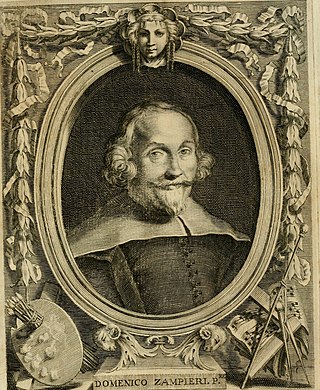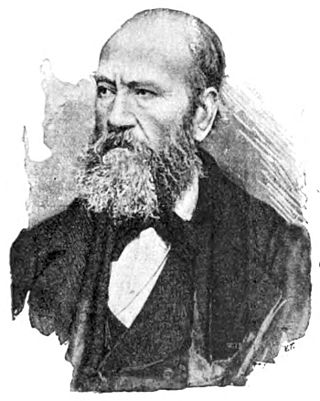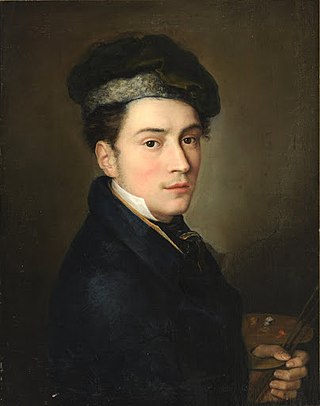
Luigi Deleidi (15 November 1784, Bergamo - 2 September 1853, Bergamo) [1] was an Italian Pre-Romantic painter; primarily of landscapes and vedute. He was often referred to by his nickname, "Il Nebbia" (The Fog).

Luigi Deleidi (15 November 1784, Bergamo - 2 September 1853, Bergamo) [1] was an Italian Pre-Romantic painter; primarily of landscapes and vedute. He was often referred to by his nickname, "Il Nebbia" (The Fog).

![Donizetti and friends, 1840, now in the Museo Donizettiano in Bergamo. From left: Luigi Bettinelli [it], Gaetano Donizetti, Antonio Dolci [ru], Simon Mayr and Luigi Deleidi Luigi Deleidi - Donizetti e amici.jpg](http://upload.wikimedia.org/wikipedia/commons/thumb/d/df/Luigi_Deleidi_-_Donizetti_e_amici.jpg/300px-Luigi_Deleidi_-_Donizetti_e_amici.jpg)
He was born to an artistically inclined family. His mother was the daughter of Pietro Antonio Gualdi Lodrini, a well-known local painter of religious works, and his brother Marco (1780-1843) also became a painter, although none of his works have been positively identified. [1] After displaying an ability to draw at an early age, Luigi was sent to the "Scuola di Pittura e Scenografia" in Milan, where he studied with Alessandro Sanquirico. [2] He may have visited Rome at this time, and returned to Bergamo in 1825.
He decided to specialize in landscapes and was nicknamed "The Fog" because his paintings all had a slightly hazy color, and many were set in the winter. [2]
He was a talented musician as well, and often played the bassoon with local orchestras or, occasionally, as a soloist. [2] He performed at both the Teatro Sociale and the Teatro Riccardi (now known as the Teatro Donizetti). In fact, he was a friend of Donizetti and an associate of other Bergamese artists, including Giuseppe Diotti, Francesco Coghetti and Paolo Vincenzo Bonomini.
Many members of the local nobility commissioned him to do frescoes at their villas, and he obtained many similar commissions during a stay in Rome from 1837 to 1842. Notable among these are the frescoes at the Castello di Calepio and the Castello di Costa di Mezzate , both belonging to the Vertova family. He is also credited with decorations at a building owned by the Torlonia family, identified as either the Villa Torlonia at Castel Gandolfo, or the Palazzo Torlonia. [1] If the latter, he probably worked together with his friend, Coghetti. He also decorated several theaters and participated in the production design. [2]
He died, unmarried, at his home in 1853. The cause was given as apoplexy. It is unknown if he ever had any students. In 1856, a bust of him by Giovanni Maria Benzoni was placed in the Accademia Carrara. [1]

Domenico Gaetano Maria Donizetti was an Italian composer, best known for his almost 70 operas. Along with Gioachino Rossini and Vincenzo Bellini, he was a leading composer of the bel canto opera style during the first half of the nineteenth century and a probable influence on other composers such as Giuseppe Verdi. Donizetti was born in Bergamo in Lombardy. At an early age he was taken up by Simon Mayr who enrolled him with a full scholarship in a school which he had set up. There he received detailed musical training. Mayr was instrumental in obtaining a place for Donizetti at the Bologna Academy, where, at the age of 19, he wrote his first one-act opera, the comedy Il Pigmalione, which may never have been performed during his lifetime.

Giovanni Battista Tiepolo, also known as GiambattistaTiepolo, was an Italian painter and printmaker from the Republic of Venice who painted in the Rococo style, considered an important member of the 18th-century Venetian school. He was prolific, and worked not only in Italy, but also in Germany and Spain.

Lorenzo Lotto was an Italian Renaissance painter, draughtsman, and illustrator, traditionally placed in the Venetian school, though much of his career was spent in other north Italian cities. He painted mainly altarpieces, religious subjects and portraits. He was active during the High Renaissance and the first half of the Mannerist period, but his work maintained a generally similar High Renaissance style throughout his career, although his nervous and eccentric posings and distortions represented a transitional stage to the Florentine and Roman Mannerists.

Domenico Zampieri, known by the diminutive Domenichino after his shortness, was an Italian Baroque painter of the Bolognese School of painters.

Frascati is a city and comune in the Metropolitan City of Rome Capital in the Lazio region of central Italy. It is located 20 kilometres (12 mi) south-east of Rome, on the Alban Hills close to the ancient city of Tusculum. Frascati is closely associated with science, being the location of several international scientific laboratories.

Giovanni Battista Castello was an Italian historical painter.

Domenico Tojetti (1807–1892) was an Italian American painter.

Pelagio Palagi was an Italian painter, sculptor and interior decorator.

Ettore Tito was an Italian artist particularly known for his paintings of contemporary life and landscapes in Venice and the surrounding region. He trained at the Accademia di Belle Arti in Venice and from 1894 to 1927 was the Professor of Painting there. Tito exhibited widely and was awarded the Grand Prize in painting at the 1915 Panama–Pacific International Exposition in San Francisco. In 1926 he was made a member of the Royal Academy of Italy. Tito was born in Castellammare di Stabia in the province of Naples and died in Venice, the city which was his home for most of his life.

Francesco Coghetti was an Italian painter and art school administrator.

Filippo Tobia Raffaele Casnedi was an Italian painter and decorative designer.

Francesco Podesti was an Italian painter, active in a Romantic style. Together with Francesco Hayez and Giuseppe Bezzuoli, he is considered one of the greatest Italian painters of the first half of the 19th century. He was prolific in his large canvases on historical subjects. He is best known for his fresco work, including those in the Hall of the Immacolata in the Vatican Museum.

Francesco Gonin was an Italian painter, engraver and scenographer.

Giovanni Piancastelli was an Italian painter and architect.

Giulio Cesare Arrivabene was an Italian painter, active initially in a neoclassical style, mainly painting historic and religious canvases. He also was active as a portraitist.
Antonio Malchiodi was an Italian painter, mainly of figure painting.

Eugenio Agneni or Agnèni was an Italian painter, mainly of historic canvases.

Pietro Gagliardi was an Italian painter and architect, who decorated many churches and palaces in Rome and throughout Italy.

Marco Filibeck is an Italian lighting designer.
Luigi Agretti was an Italian painter and decorator.
![]() Media related to Luigi Deleidi at Wikimedia Commons
Media related to Luigi Deleidi at Wikimedia Commons